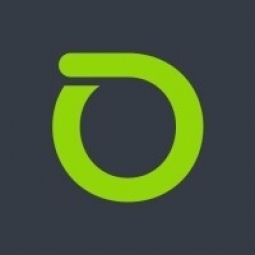公司规模
Large Corporate
地区
- Middle East
国家
- United Arab Emirates
产品
- NetScout OptiView® Network Analysis Tablet
技术栈
- Network Analysis
- Wireless LAN analysis
- Virtualized server architecture
实施规模
- Enterprise-wide Deployment
影响指标
- Productivity Improvements
- Customer Satisfaction
技术
- 网络与连接 - 网络管理和分析软件
适用行业
- 医疗保健和医院
适用功能
- 维护
用例
- 远程资产管理
- 根因分析与诊断
服务
- 系统集成
关于客户
沙特德国医院迪拜分院是沙特德国医院集团旗下第六家三级医院,该集团是中东地区最大的私立医院集团。该医院拥有 316 张床位,提供急诊、外科和其他医疗服务,涉及心脏病学、糖尿病、肺科、透析和肾科、听力学、运动损伤等多个专业。沙特德国医院集团旗下有九家医院,明年计划再增两家。迪拜分院目前是该集团最新、最先进的医院,将领先的医疗保健与尖端技术融为一体。该医院完全数字化。中央电子记录、医学影像和医院的图片存档和通信系统为医生提供完整的患者体验——从患者进门到出院,确保提供最全面的护理。先进的 IT 网络和数百个运营和医疗应用程序实现了这种数字化患者体验。该网络拥有 3,500 个节点,具有虚拟化服务器和最终用户客户端架构。整个医院都覆盖了无线网络,将应用程序的可用性从候诊室扩展到了手术室。
挑战
沙特德国医院迪拜分院被认为是中东最先进的医院。它拥有先进的 IT 网络和数百个应用程序,可实现全数字化患者健康记录管理系统。该网络拥有 3,500 个节点,具有虚拟化服务器和最终用户客户端架构。这种先进的网络和全数字化环境不仅使医生和患者受益,而且也提高了医院 IT 团队的期望。这里容不得一丝差错。医生必须能够立即访问关键记录和应用程序,才能做出正确的患者诊断和治疗决策。由于事关生死,网络和应用程序必须全天候运行,不能停机,绝对不能出现任何异常。由于每个不同的系统都在孤岛中运行,需要不同的监控和管理工具,因此整个系统的管理不必要地复杂且耗时。
解决方案
沙特德国医院迪拜分院通过 NetScout 和 OptiView XG 网络分析平板电脑找到了解决方案。OptiView XG 执行端到端网络性能和压力测试,自动检测和分析网络问题,然后提供分步解决方案。OptiView XG 支持 1GbE 和 10GbE,以及完整的 802.11 a/b/g/n/ac 无线局域网分析。它可以在任何环境中使用,包括数据中心、虚拟化服务器或远程或无线连接站点。医院评估了多个网络管理系统,并在各个分支机构进行了持续测试。OptiView XG 凭借其用户友好的界面和逻辑工作流程获得最高分,可帮助轻松隔离和解决问题。最引人注目的是,沙特德国医院迪拜分院 IT 团队发现,他们可以使用 OptiView XG 来获取整个网络的宏观视图,然后深入研究数据包级数据以查看微观问题。OptiView XG 许可模式是 Juzer 的主要卖点。 OptiView XG 可监控和排除连接到网络的任何设备的故障,无需为每台设备单独购买许可证。竞争性解决方案要求为网络上的每台设备单独购买许可证。医院网络上的访客用户数量各不相同,从来访的医务人员到患者本身,这使得确定许可证发放的准确数量变得极其困难。
运营影响

Case Study missing?
Start adding your own!
Register with your work email and create a new case study profile for your business.
相关案例.

Case Study
Hospital Inventory Management
The hospital supply chain team is responsible for ensuring that the right medical supplies are readily available to clinicians when and where needed, and to do so in the most efficient manner possible. However, many of the systems and processes in use at the cancer center for supply chain management were not best suited to support these goals. Barcoding technology, a commonly used method for inventory management of medical supplies, is labor intensive, time consuming, does not provide real-time visibility into inventory levels and can be prone to error. Consequently, the lack of accurate and real-time visibility into inventory levels across multiple supply rooms in multiple hospital facilities creates additional inefficiency in the system causing over-ordering, hoarding, and wasted supplies. Other sources of waste and cost were also identified as candidates for improvement. Existing systems and processes did not provide adequate security for high-cost inventory within the hospital, which was another driver of cost. A lack of visibility into expiration dates for supplies resulted in supplies being wasted due to past expiry dates. Storage of supplies was also a key consideration given the location of the cancer center’s facilities in a dense urban setting, where space is always at a premium. In order to address the challenges outlined above, the hospital sought a solution that would provide real-time inventory information with high levels of accuracy, reduce the level of manual effort required and enable data driven decision making to ensure that the right supplies were readily available to clinicians in the right location at the right time.

Case Study
Gas Pipeline Monitoring System for Hospitals
This system integrator focuses on providing centralized gas pipeline monitoring systems for hospitals. The service they provide makes it possible for hospitals to reduce both maintenance and labor costs. Since hospitals may not have an existing network suitable for this type of system, GPRS communication provides an easy and ready-to-use solution for remote, distributed monitoring systems System Requirements - GPRS communication - Seamless connection with SCADA software - Simple, front-end control capability - Expandable I/O channels - Combine AI, DI, and DO channels

Case Study
Driving Digital Transformations for Vitro Diagnostic Medical Devices
Diagnostic devices play a vital role in helping to improve healthcare delivery. In fact, an estimated 60 percent of the world’s medical decisions are made with support from in vitrodiagnostics (IVD) solutions, such as those provided by Roche Diagnostics, an industry leader. As the demand for medical diagnostic services grows rapidly in hospitals and clinics across China, so does the market for IVD solutions. In addition, the typically high cost of these diagnostic devices means that comprehensive post-sales services are needed. Wanteed to improve three portions of thr IVD:1. Remotely monitor and manage IVD devices as fixed assets.2. Optimizing device availability with predictive maintenance.3. Recommending the best IVD solution for a customer’s needs.

Case Study
HaemoCloud Global Blood Management System
1) Deliver a connected digital product system to protect and increase the differentiated value of Haemonetics blood and plasma solutions. 2) Improve patient outcomes by increasing the efficiency of blood supply flows. 3) Navigate and satisfy a complex web of global regulatory compliance requirements. 4) Reduce costly and labor-intensive maintenance procedures.

Case Study
Cloud-based healthcare solution for Royal Philips
Royal Philips wanted to launch its cloud-based healthcare solution HealthSuite Digital Platform in China to deliver services to help cope with challenges related to urbanization and population growth. Philips wanted to achieve this goal by combining mobile, cloud computing and big data technologies. To bring this platform and product to market, Philips required cloud computing and local technical service capabilities in China, in addition to a flexible IT infrastructure that could handle user requests.








